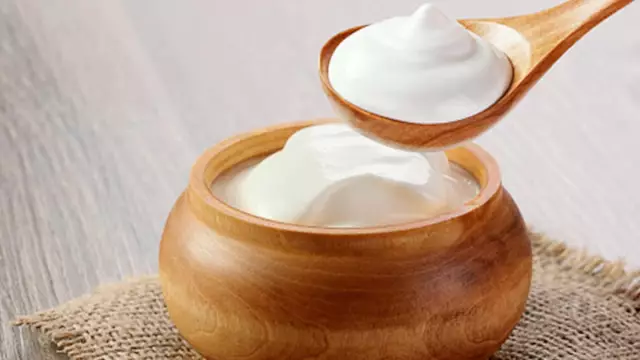- Author Rachel Wainwright [email protected].
- Public 2023-12-15 07:39.
- Last modified 2025-11-02 20:14.
Superficial gastritis
The content of the article:
- Causes and risk factors
- Symptoms of superficial gastritis
- Diagnostics
- Superficial gastritis treatment
- Potential consequences and complications
- Forecast
- Prevention
Superficial gastritis is an inflammation of the gastric mucosa, not accompanied by a violation of the secretory function. The disease is persistent, that is, it is characterized by a long course with recurrent exacerbations. In the medical literature, this pathology is often called "type B gastritis" or "non-atrophic gastritis".

Helicobacter pylori infection is one of the reasons for the development of superficial gastritis
There are no exact statistics on the incidence of superficial gastritis, since in most cases it proceeds without any pronounced clinical manifestations, and patients do not seek medical help. According to the estimated experts, at least 50% of the world's population suffers from the disease, regardless of age. Somewhat more often, superficial gastritis affects men than women.
Timely diagnosis and treatment of superficial gastritis is one of the most important problems of modern gastroenterology, as the disease progresses over time and can be complicated by the formation of an ulcer, as well as a malignant stomach tumor.
Causes and risk factors
Risk factors for the development of superficial gastritis are quite extensive and varied. These include:
- poor nutrition;
- smoking;
- abuse of alcoholic beverages;
- Helicobacter pylori infection;
- taking some medications.
Let's consider the action of each of these factors.
Irrational and improper nutrition (constant consumption of food that is too hot or too cold, poor chewing, dry food, irregular meals) irritates the gastric mucosa, as a result of which parietal cells increase the secretion of hydrochloric acid.
The use of alcoholic beverages is accompanied by a deterioration of microcirculatory blood circulation in the gastric mucosa, a decrease in the regenerative capacity of epithelial cells, and a decrease in the secretion of mucus that protects the stomach wall from damage.
Long-term smoking experience enhances the synthesis of hydrochloric acid by parietal cells, spasm of blood vessels of the stomach wall, as well as impaired motor function.

Smoking and alcohol are predisposing factors for the development of chronic gastritis
Long-term use of certain medications (corticosteroids, nonsteroidal anti-inflammatory drugs, anti-tuberculosis drugs, antibiotics) leads to the development of superficial gastritis. The most common cause of the disease is the uncontrolled intake of non-steroidal anti-inflammatory drugs by patients (Paracetamol, Aspirin, Analgin, Citramon), since they have the ability to inhibit the production of prostaglandins that protect the gastric mucosa from damage by gastric juice.
Infection with Helicobacter pylori is accompanied by impaired blood supply to the gastric mucosa, increased synthesis of hydrochloric acid and destruction of the mucous-bicarbonate barrier. Initially, bacteria infect the antrum region of the stomach, and later on the entire surface of its mucous membrane.
Diseases of the internal organs, which are accompanied by the development of hypoxia, are often complicated by the development of superficial gastritis. These conditions include:
- chronic respiratory failure;
- chronic cardiovascular failure;
- hypovitaminosis conditions;
- various types of anemia;
- insufficiency of the adrenal cortex.
Symptoms of superficial gastritis
The main symptom of superficial gastritis is mild pain localized in the epigastric region (upper abdomen). Usually, their occurrence is provoked by a gross error in the diet - the use of low-quality, heavy or spicy food, which causes an exacerbation of a sluggish inflammatory process in the gastric mucosa.
With superficial gastritis, the pains are dull and widespread. This distinguishes them from the pain that occurs against the background of gastric ulcer and duodenal ulcer, the localization of which patients in most cases indicate very accurately.
Inflammation from the gastric mucosa with superficial gastritis often extends to the duodenal mucosa. In this case, the disease is called gastroduodenitis. It is characterized by the occurrence of pain at night or on an empty stomach, characterized by a decrease in pain after eating.

Pain with superficial gastritis is dull and diffuse
Pain with superficial gastritis is more likely perceived by patients as a kind of discomfort and rarely becomes a reason for contacting a gastroenterologist. Other symptoms of the disease are:
- constipation;
- frequent belching of air or sour;
- occasional mild nausea;
- heartburn;
- slight pain in the epigastric region, determined by palpation.
As already noted above, in about 50% of cases, patients do not have any clinical symptoms of superficial gastritis at all and the disease is diagnosed accidentally during fibroesophagogastroduodenoscopy (FEGDS) performed in connection with any other pathology of the digestive tract.
Diagnostics
The main method for diagnosing superficial gastritis is FEGDS with biopsy of the altered area of the gastric mucosa. With this disease, during the study, hyperemia (redness) and edema of the mucous membrane, an increased amount of mucus in the stomach cavity are observed. Similar changes are often detected in the duodenum. If a patient develops duodeno-gastric reflux, the presence of bile may be detected in the stomach cavity.
For the purpose of the final diagnosis of superficial gastritis, the doctor performs a biopsy of the mucous membrane in the fundic and antrum parts of the stomach, since in this pathology the inflammatory process is most often localized in them. In the future, the biopsy is sent to the laboratory for histological examination.

FEGDS with biopsy is the main method for diagnosing superficial gastritis
Previously, for the diagnosis of superficial gastritis, X-ray examination of the stomach with double contrast was often used. The main radiological signs of the disease are:
- violations of the motor-evacuation function;
- an increase in the severity of the folds of the mucous membrane;
- symptoms of hypersecretion.
However, X-ray of the stomach is significantly inferior in its informative value to FEGDS and therefore is rarely used now.
In the diagnosis of superficial gastritis, the level of secretion of hydrochloric acid by parietal cells of the gastric mucosa must be determined. The acidity of the stomach is most conveniently assessed according to the data of intragastric daily pH-metry. This research method is performed using a special radio capsule or probes (single-channel, multi-channel). In contrast to atrophic gastritis, with a superficial level of gastric acidity, it is normal or slightly exceeds it.
In order to assess the function of the stomach glands, the level of pepsinogen I and II in the blood is determined. With superficial gastritis, their concentration remains within normal limits.
All patients suffering from superficial gastritis must be tested for the presence of Helicobacter pylori, since the further tactics of treating the disease is largely determined by its presence or absence. The following methods are used to identify this infectious agent in clinical practice:
- breath test for Helicobacter pylori;
- detection of Helicobacter in feces by ELISA;
- determination of antibodies to Helicobacter in blood serum.
Superficial gastritis should be differentiated from a number of other diseases of the gastrointestinal tract:
- stomach cancer;
- enteritis;
- cholecystitis;
- pancreatitis;
- functional dyspepsia;
- esophagitis;
- peptic ulcer of the stomach and duodenum.

An obligatory stage in the diagnosis of superficial gastritis is the detection of the bacteria Helicobacter pylori in the body
In order to carry out differential diagnosis, sometimes it becomes necessary to conduct additional studies, for example, analysis of feces for occult blood, ultrasound of the abdominal organs, esophageal manometry, etc.
Superficial gastritis treatment
Superficial gastritis is treated by a gastroenterologist. When prescribing therapy, the doctor takes into account the level of acidity of the stomach, the features of morphological changes in the mucous membrane, the etiology of the disease.
In most cases, the treatment of superficial gastritis is carried out on an outpatient basis. The patient is prescribed medications that reduce the secretion of hydrochloric acid (proton pump inhibitors, blockers of H 2 -histamine receptors). To protect the gastric mucosa from adverse effects and neutralize hydrochloric acid, enveloping and antacids are used. Sucralfate has a cytoprotective effect on epithelial cells of the stomach. If a patient is infected with Helicobacter pylori, three- or four-component eradication therapy is indicated. The three-component regimen includes two antibiotics and one anti-secretory agent. The four-component regimen includes bismuth citrate, metronidazole, tetracycline, and an antisecretory agent.

A sparing diet is an indispensable condition in the treatment of superficial gastritis
The organization of proper nutrition is of no small importance in the complex therapy of the disease. The diet for superficial gastritis provides for mechanical, chemical and thermal sparing of the digestive tract. Food intake is carried out 5-6 times a day in small portions (fractional meals). All foods that enhance the secretory activity of the cells of the gastric mucosa are excluded from the diet, in particular, fried and spicy foods, pickles, marinades, smoked meats, strong broths, carbonated drinks, coffee.
Potential consequences and complications
Superficial gastritis in the absence of the necessary therapy can lead to the development of gastric ulcer and duodenal ulcer. Long-term disease is one of the risk factors for the formation of a malignant stomach tumor.
Forecast
With adequate treatment, superficial gastritis goes into remission, which can last for a long time, in some cases tens of years. However, achieving full recovery is difficult. The patient still has a predisposition to the disease, and relapses often occur in the presence of predisposing factors.
Prevention
Prevention of the occurrence of superficial gastritis includes:
- organization of proper balanced nutrition;
- giving up bad habits (smoking, drinking alcohol);
- refusal of self-medication with non-steroidal anti-inflammatory drugs;
- timely detection and treatment of diseases accompanied by hypoxia.
Patients suffering from superficial gastritis should be regularly prevented. To do this, it is important to follow the diet recommended by the doctor, lead an active lifestyle, avoid overwork and stressful situations, do not consume alcoholic beverages and quit smoking.
YouTube video related to the article:

Elena Minkina Doctor anesthesiologist-resuscitator About the author
Education: graduated from the Tashkent State Medical Institute, specializing in general medicine in 1991. Repeatedly passed refresher courses.
Work experience: anesthesiologist-resuscitator of the city maternity complex, resuscitator of the hemodialysis department.
The information is generalized and provided for informational purposes only. At the first sign of illness, see your doctor. Self-medication is hazardous to health!






